Deck replacement costs depend on materials, any structural damage you need to fix, and more. This guide explores how much it costs to replace or repair a deck.
Standard Porch Size: Guide to Dimensions and Finding What’s Right for You
From small entry porches to full wraparounds


Porch sizes range from just 10 square feet for entry porches to hundreds of square feet for wraparound porches.
Size your porch based on home size, yard size, setback regulations, and how you want to use your outdoor space.
Have a professional deck builder help decide on dimensions if you’re unsure of how big or small to go.
The right size porch can help maximize curb appeal and property value, so it’s worth some intensive planning.
A porch can offer anything from a small, covered area to protect you from rain and snow while entering your home to a large area for outdoor lounging and relaxation. The right porch size for you will depend on the type of porch you want, how you plan on using the space, and the size of your home and property. Getting the size right can mean maximizing curb appeal, home value, and outdoor enjoyment, while the wrong size can look odd and detract from value.
What Is the Standard Porch Size?
There’s no universally standard porch size, primarily because there are so many different types of porches to choose from, and the dimensions vary widely among them. For porches where you plan on placing some seating, you should aim for a depth of no smaller than 6 feet, and an 8-foot depth is ideal. This gives you room for porch furniture plus clearance to maneuver around it without the space feeling too cramped.
For small entryway porches that just serve to protect packages, give you some reprieve from the rain or snow, or simply add to your home’s curb appeal, a depth as small as 4 feet is acceptable.
The length of your porch can vary from 5 feet to 100 feet or more, depending on the type of porch.
Porch Size by Type
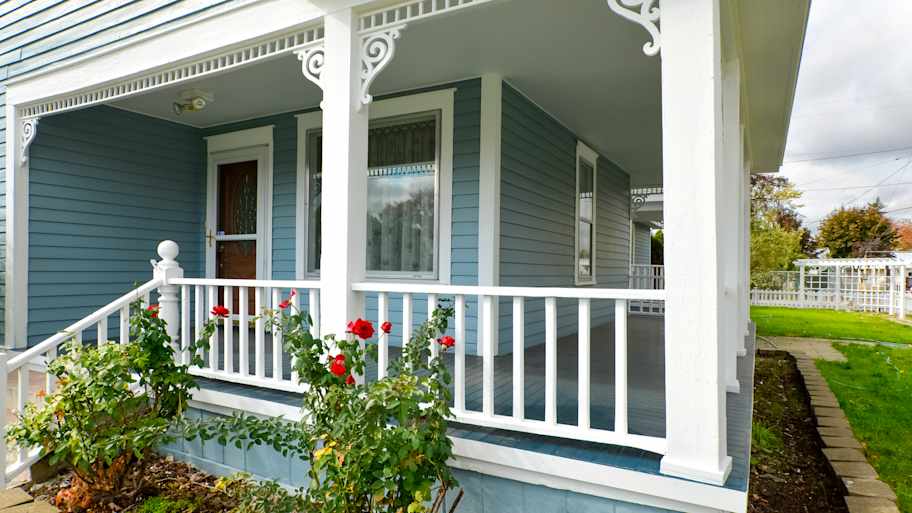
The type of porch you choose will largely dictate the appropriate porch size for your home. An entryway porch, for example, will always take up a small fraction of what a wraparound porch’s square footage, and an open porch or farmer’s porch will fall somewhere in the middle.
For the most part, you want your porch to be between six and eight feet deep, but you can go as low as 4 feet and as high as 12, depending on the type of porch and the size of your home. The length of the porch will vary quite a bit, depending on the type.
| Type of Porch | Depth (Ft.) | Length (Ft.) |
|---|---|---|
| Entryway | 4–6 | 4–10 |
| Full front | 6–12 | Width of house |
| Wraparound | 6–12 | Perimeter of House |
Porch Size for Entryway Porches
Entryway porches, also called porticos, are small, covered areas that lead to the main entryway in your home. They usually only span a few feet on either side of your front door, so they’re the smallest of the different types of porches.
It’s less common for these to provide seating, and they serve more to boost curb appeal, to house decor, and to give you some protection from rain and snow while you’re entering your home or for packages. If you don’t plan on including seating, aim for a depth of 4 feet. If you do want some seating, extend the porch well beyond the sides of your door and go for a 6-foot depth to accommodate outdoor furniture.
Porch Size for Full Front Porches
Full front porches, also called farmer’s porches or open porches, span all or most of the front of your home, depending on your home’s layout and design. When you build a front porch, you usually set the length equal to the width of the front face of your home.
Front porches provide similar protection from the elements for you and any packages you have delivered, but since they’re much bigger than entryway porches, it’s common to fit them with furniture. As such, you should aim for a depth of at least 6 to 8 feet, and you can go up to 12 feet on larger homes without it looking out of place.
Porch Size for Wraparound Porches
As the largest type of porches, wraparound porches cost the most but are the ultimate in outdoor relaxation and home charm. They almost always provide numerous places to sit and relax. You can get away with a depth of 6 feet, but 8 to 10 feet is much more common to allow ample space for outdoor couches, porch swings, and lounge chairs.
As the name suggests, a wraparound porch wraps around your entire home, so the length will be equal to your home’s perimeter. This measurement varies widely, but for an average 2,000-square-foot home with two stories, you’re looking at a porch length of between 120 and 180 linear feet.
Factors That Influence Porch Size
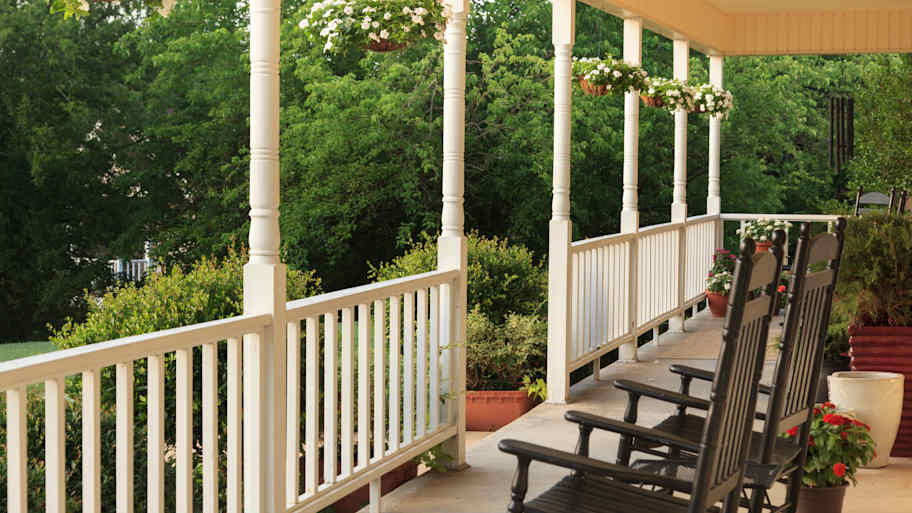
Porch sizes vary so much because there are a few factors at play that can increase or decrease the ideal size for your outdoor enjoyment.
Type of Porch
As mentioned, the type of porch you want plays a crucial role in porch size. An entryway porch has an average size of just 24 to 32 square feet, while a full front porch has an average size of 300 square feet. A wraparound porch is, by far, the largest, with an average size of 1,100 to 1,300 square feet.
Purpose
How you plan on using your outdoor area will also affect your porch size. For small porches that just serve to add to the appearance of your home or create a welcoming entrance, you can go down to a 4-foot depth, which is going to reduce total square footage. If you want space for standard outdoor furniture like sofas and lounge chairs, you should aim for at least a 6-foot depth. For larger lounging areas or specialty furniture like swings and outdoor sectionals, a 10- to 12-foot depth is ideal.
Depth is just one dimension, of course, but it plays an important role in your porch’s square footage.
Home Size
The size of your home is another important factor in sizing your porch properly. For a full front porch, the width of your home is usually what determines the length of your porch. If you have a home that’s deeper than it is wide, though, you should consider downsizing the width of the porch. For example, 8 to 10 feet deep is ideal for a front porch, but if your home is only 20 feet wide, a porch that’s 10 feet deep might look out of proportion.
Similarly, you should consider your home size when deciding on entryway porch and wraparound porch dimensions. Consider downsizing the depth of the porch if your home is on the smaller end to keep things proportionate, and feel free to go with a luxurious 12-foot-deep porch for a larger home.
Yard Size and Setback Laws
Your yard size can dictate how deep your porch can legally be, since most municipalities have setback laws that prohibit construction within a certain distance of your property lines. This will more often be problematic for wraparound porches, as properties tend to have less in the way of side yards than front yards and backyards. Hiring a professional who builds porches to size your porch will ensure legality and good proportions with your property size.
Climate
Finally, consider upsizing your porch if you live in a warmer or more moderate climate where you can enjoy your porch for longer stretches throughout the year. Of course, you can install a massive wraparound porch in an area that sees long, frigid winters, but it may not be worth the investment for you and your family, and buyers are less likely to see the value, given the limited amount of time they can enjoy it each year.
What to Do If You Have the Wrong Size Porch
If your porch is too small for your needs, the best thing to do is to contact a deck builder near you to have them design and build an expansion. You may need to refinish your existing porch materials to make sure the old matches the new, but you’ll still pay far less than you would if you knocked down the old porch and replaced it in its entirety.
If your porch feels too big for what you use it for, you may just need to fill in some of the space with decor or additional furniture. Unfortunately, demolishing a portion of the porch isn’t always possible, so you may need to knock down the existing one and replace it with a properly-sized porch to fix the problem. You can also opt to screen-in your porch to make it seem like a more standalone part of your home, which can help give the illusion of proportion.
The homeowners guide to deck and porch services
From average costs to expert advice, get all the answers you need to get your job done.
- •

Are your porch columns old or simply unsightly? It might be time to refresh them. Here's a breakdown of the cost of replacing porch columns.

Are you wondering what factors might affect a wraparound porch’s cost? Budget for this rustic and charming addition with our cost guide.
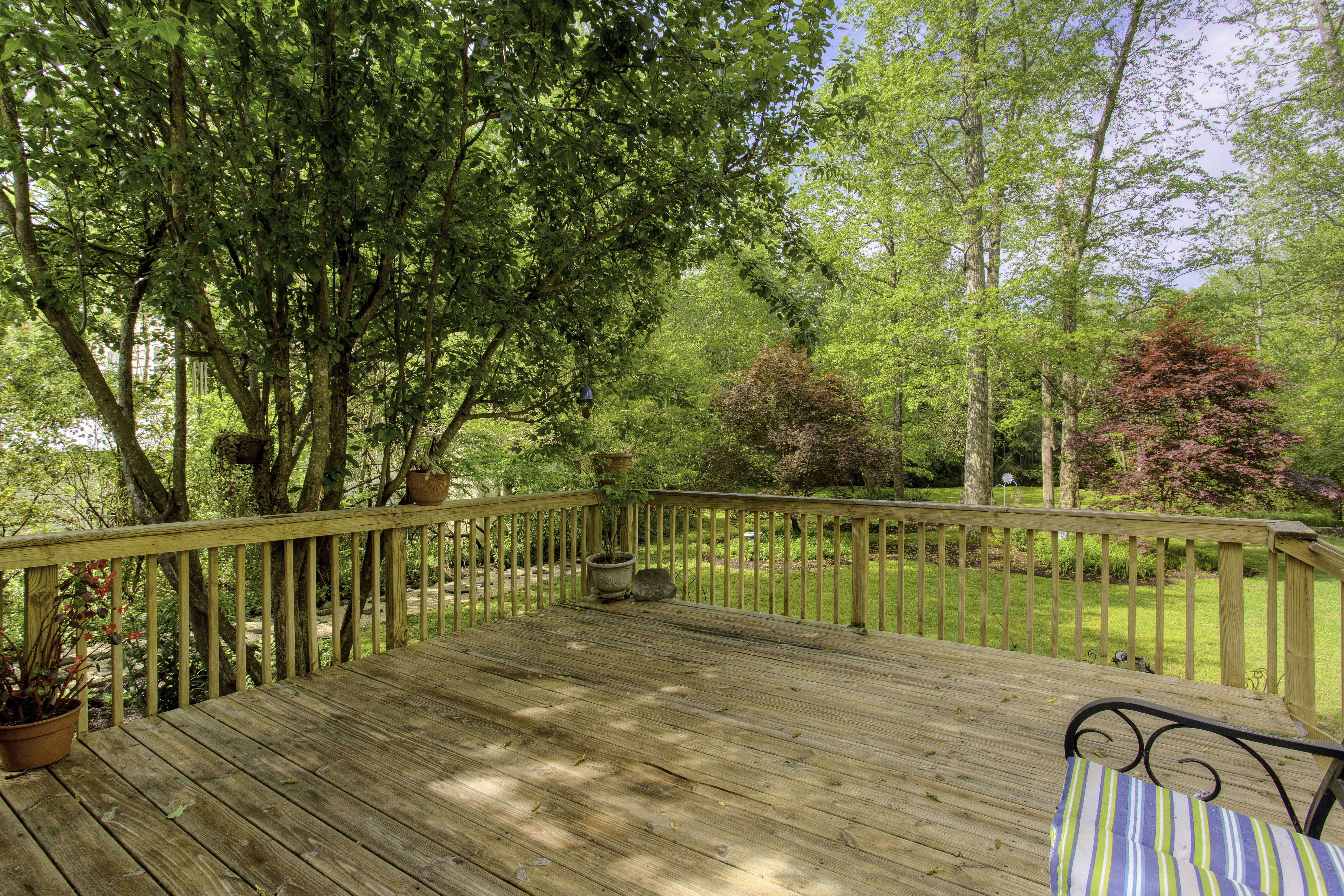
Why are my deck boards rotting? Several things could be to blame, including mold, termites, and moisture. Learn common causes and prevention methods.
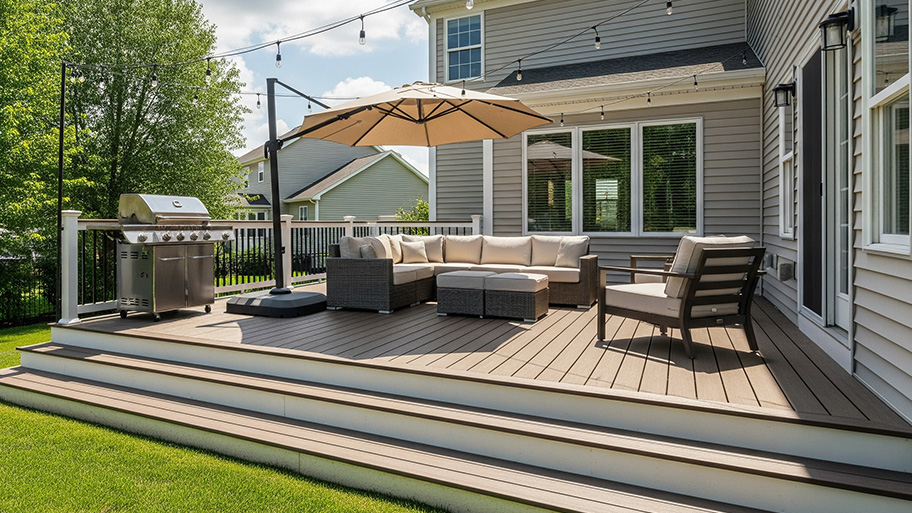
You might know about deck boards and railings, but what are the other parts of a deck? Here are the parts you should know before you build a new deck.
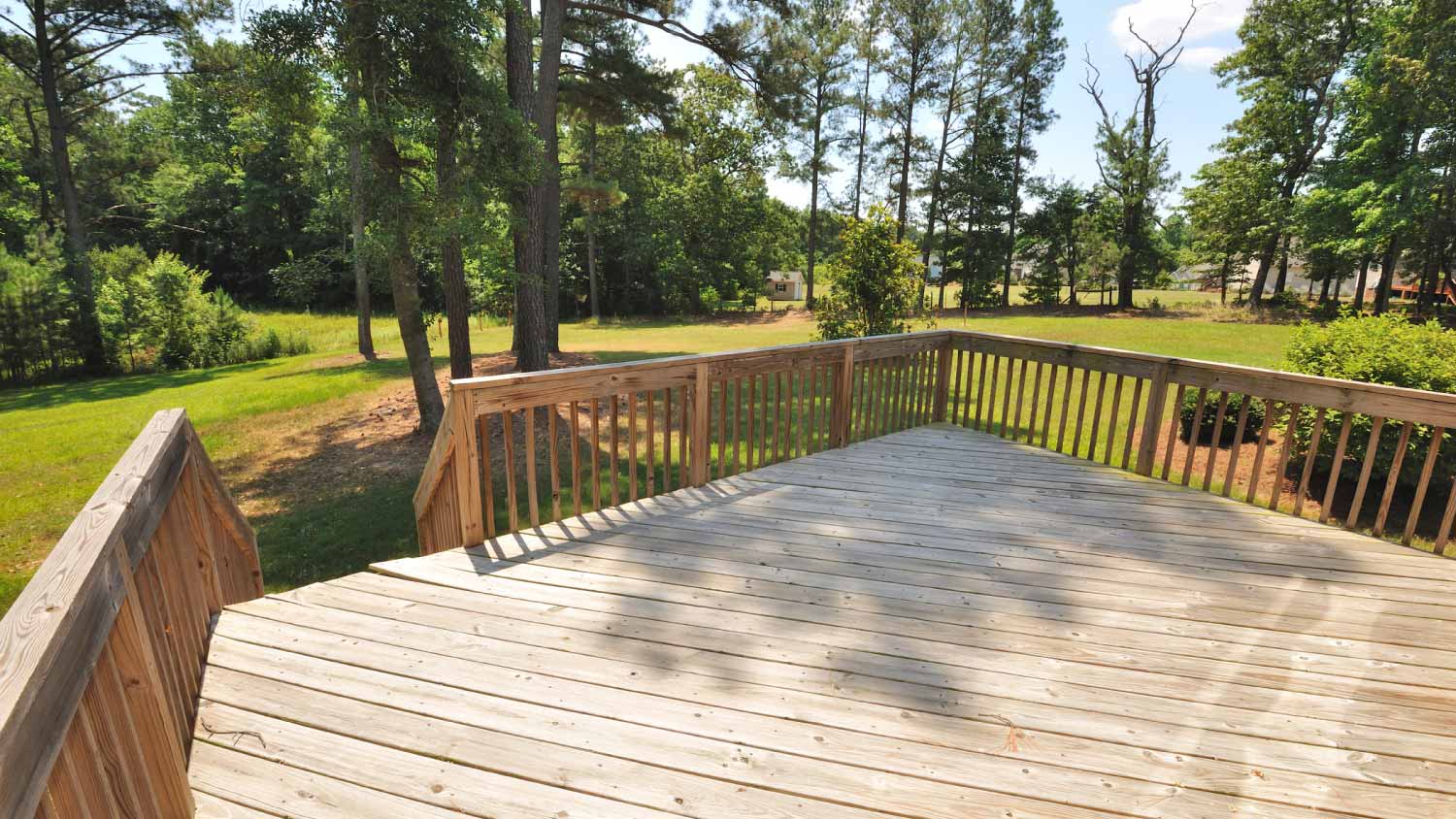
Deck railings keep you safe and give your deck a finished look. Here’s how to install railing posts on a deck to support strong and sturdy railings.

